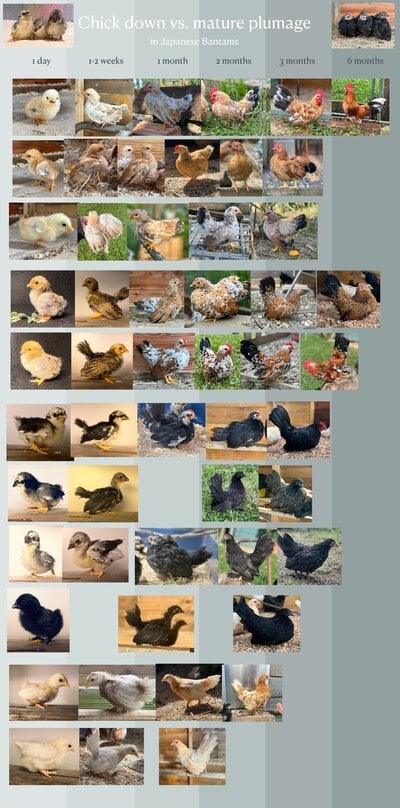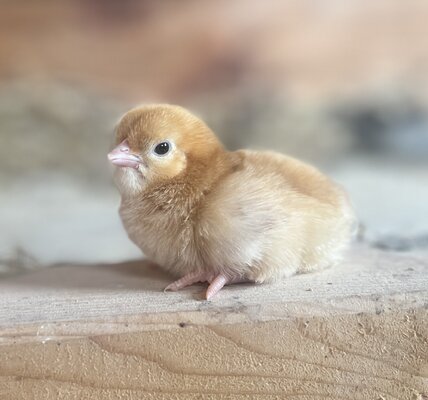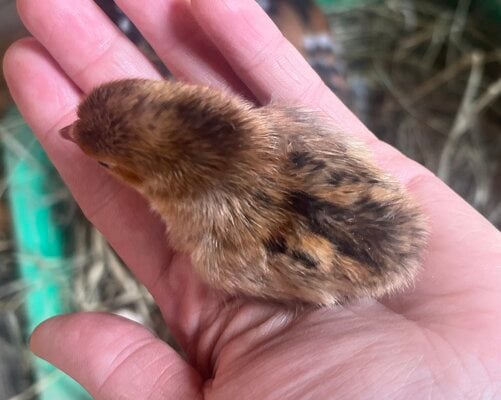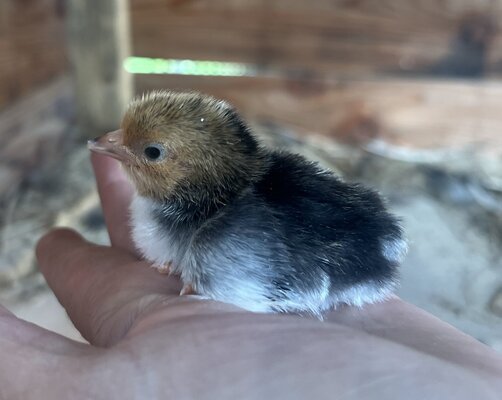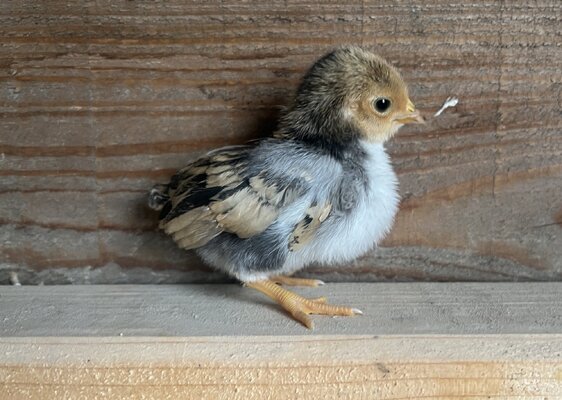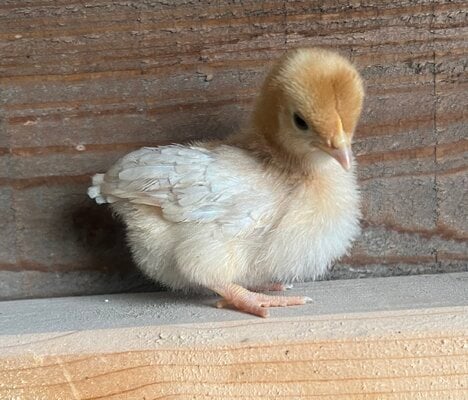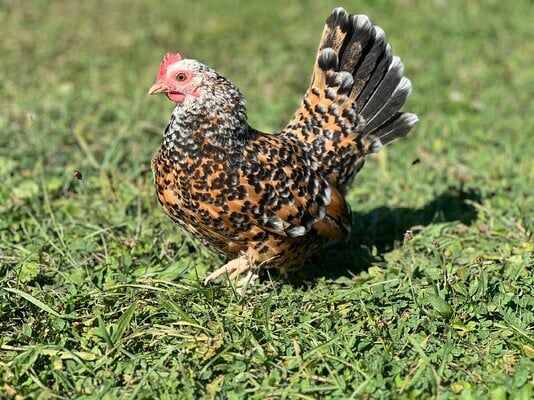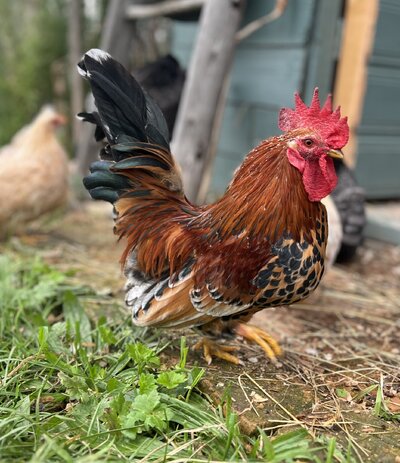AbL
Songster
- Apr 18, 2024
- 145
- 400
- 116
As I haven't found many sources for my questions, I present you a little side project; showing the color development of some Japanese bantam chicks from this year in a color chart.
The first three are red millefleur on eWh based birds, 4 and 5 red millefleur on eB birds, then black mottled, slate blue, black face and the last two are yellow mottled with champagne I think
The first three are red millefleur on eWh based birds, 4 and 5 red millefleur on eB birds, then black mottled, slate blue, black face and the last two are yellow mottled with champagne I think

